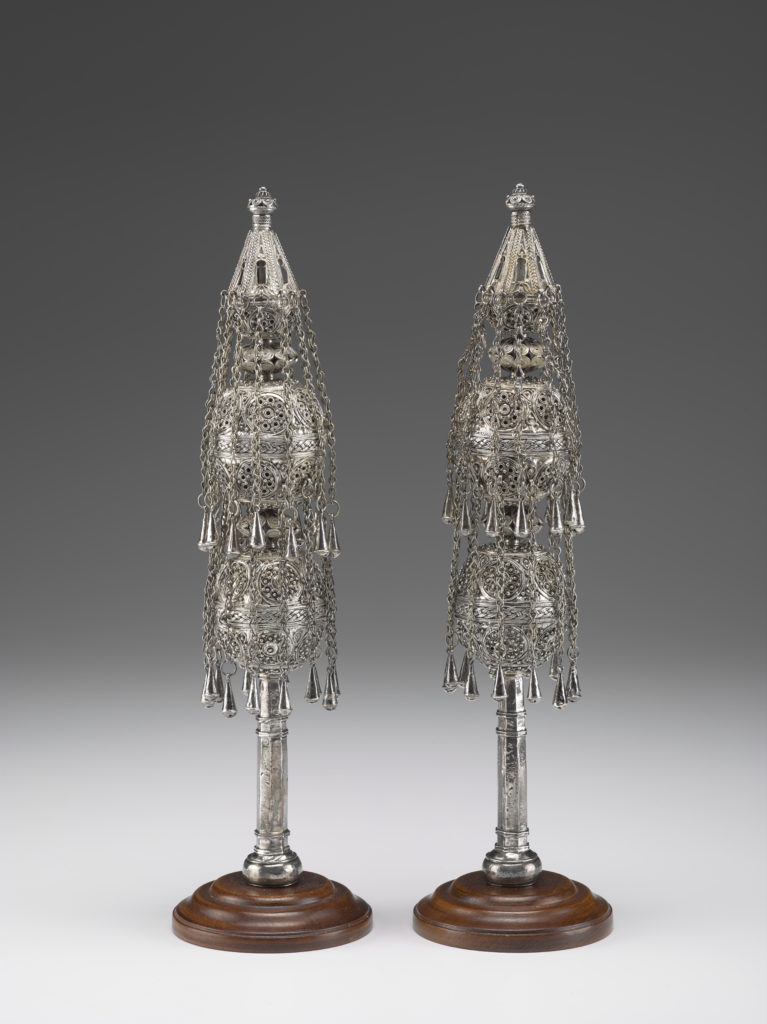Torah Finials (work of art)
Artwork Info
Key Ideas
- These finials feature a series of small chains with bells. Each finial has two rounded spheres, which researchers attribute to a common local design in Djerba. The design also includes hexagon-shaped (six-sided) towers with small crowns on top. After the Torah scroll is read publicly in the synagogue, it is lifted (hagbah in Hebrew) and bound, or wrapped up, (gelilah in Hebrew) as it is prepared to return to its housing in the Aron Kodesh or Holy Ark.
- In Jewish communities throughout North Africa, Torah finials like these would be used with Torah scrolls housed in sturdy cases.
- The Island of Djerba, located off the coast of the North African country of Tunisia, is home to one of the oldest Jewish communities in the world. This community is approximately 2,500 years old.
- Despite occasional tensions, the Jewish community of Djerba has lived peacefully alongside their Muslim neighbors for over two thousand years. As of 2016 only 1,500 Jews still live on the island, down from a population of approximately 100,000 in 1956 (when Tunisia won its independence from France).
- The artist (or artists) who created these finials left an important record by engraving the name of the person who commissioned them, Yosef (Joseph) Harka, on the shaft on one finial, and the Jewish date of [5]603 (which translates to 1842/43) on the other.
Learn More
These finials come from a synagogue on Djerba, an island off the coast of Tunisia and home to an ancient and once thriving Jewish community. On Djerba and throughout North Africa and other Islamic lands, the sacred Torah scroll is traditionally kept in a special decorative wood case called a tik (pronounced teek), which is often topped by a coronet (similar to a crown) and ornamental finials.
The large spheres of both finials are topped by two rosettes, or rose-shaped decorations, that face each other. The bottom piece is concave (curling upward, like a bowl) and the top piece is convex (curving downward, like an open umbrella).
In addition to numerous applied filigree (lace-like dots), the spheres are adorned with many small silver dome “pearls” arranged in a planetary pattern. Each sphere is divided along its middle with a braided motif that was created using a series of twisted and straight silver threads.
Additional Resources
Resources for Teachers:
- Read an article about the history and culture of the Jewish community on Djerba.
- Read an article about the French artist Delacroix, the art style known as Orientalism, and the Sephardic Jews of North Africa.
- Explore similar finials at the Center for Jewish Art in Israel.
Resources for Students:
- Learn more about Islamic art.
- View a map showing major settlements and cities of Jewish communities who settled in the Ottoman Empire (1299–1923).
- Watch a short video of a Torah in a case being lifted and bound.

